Dear Steemit friends:
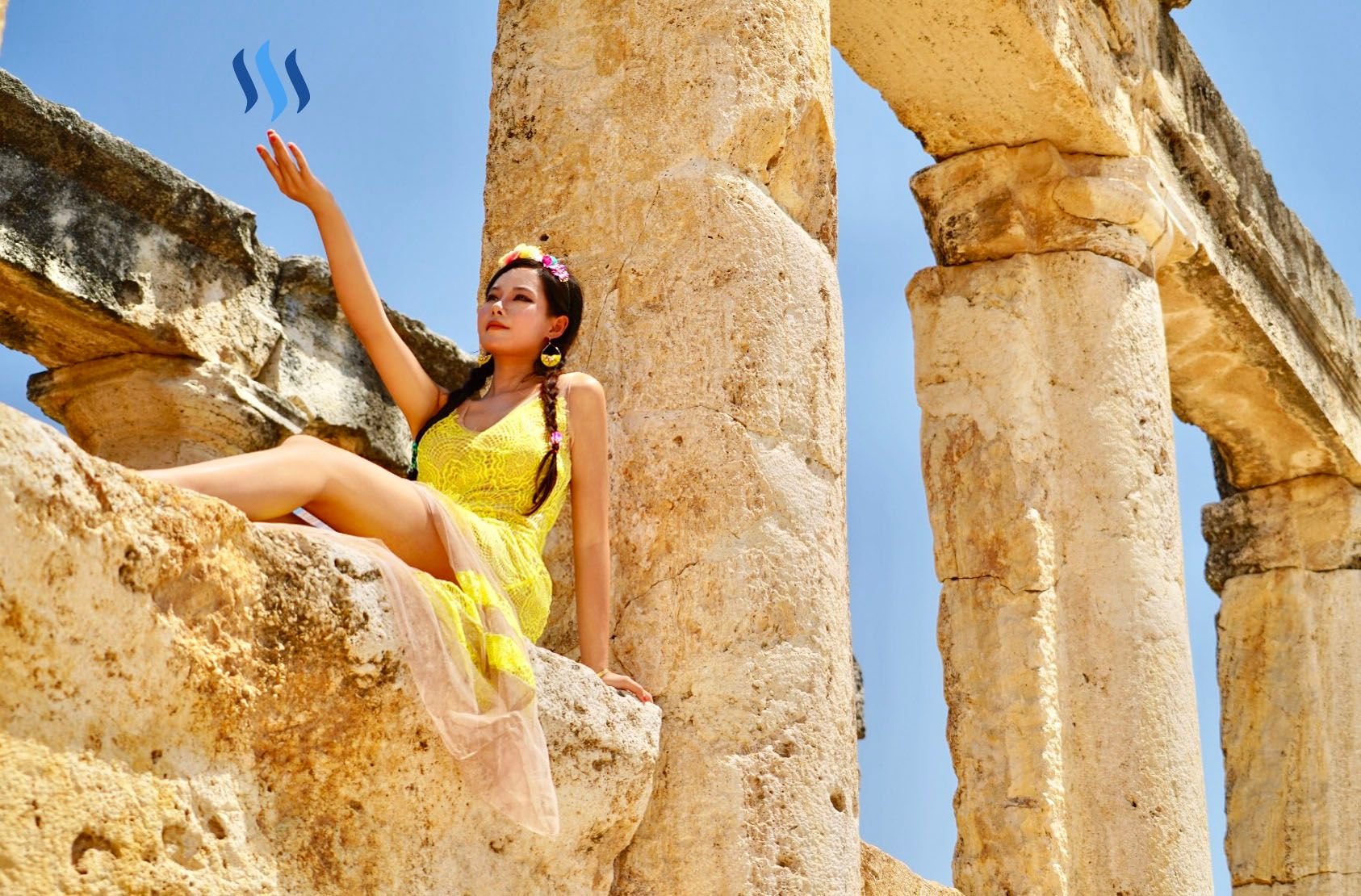
In today's edition of Travel with me, we'll be visiting Hierapolis and admiring the ancient ruins of this once very prosperous ancient city.
People often overlook Hierapolis because much of the attention is focused on the Pamukkale white travertine terraces which spread along the side of the mountain face of Büyük Menderes valley. Of course, that is to be expected because the terraces are truly beautiful and are unique on this planet!
Despite the beauty of the Pamukkale travertine terraces, it is definitely still worth visiting Hierapolis and seeing the ancient ruins of the once great city of Anatolia.
It's amazing to think that this city once had a population of nearly 100,000 people. Established by King Eumenes II of Pergamon, the town was built around the travertine terraces which were regarded as a natural miracle within his kingdoms's borders.
The town was named after Hiera, the wife of Telephos, the legendary founder of Pergamon.
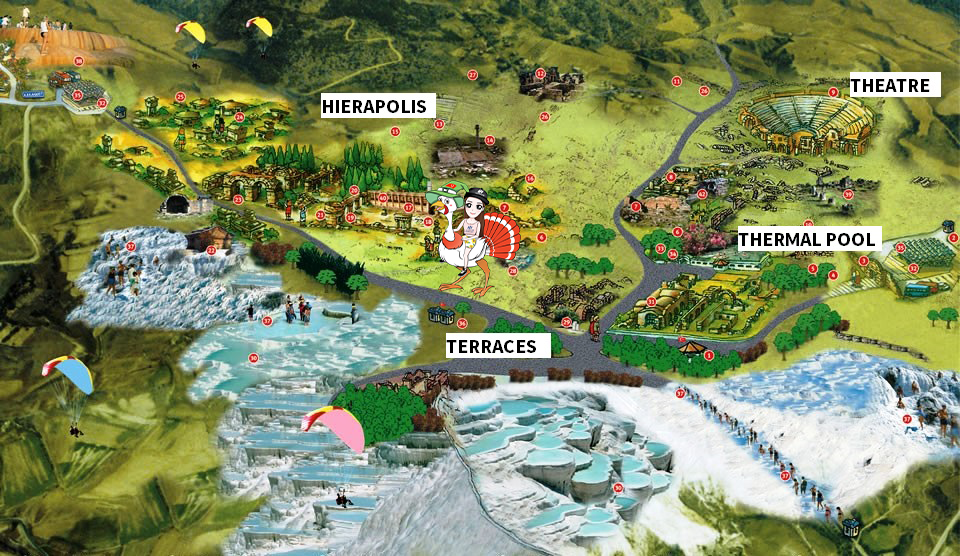
The whole Hierapolis and Pamukkale site is now a UNESCO World Heritage Site, meaning that considerable effort has been made to protect, preserve and even restore parts of the ancient city.
The entrance ticket to Pamukkale is inclusive of Hierapolis but you will likely want to make separate trips to visit each place. I spent almost an entire afternoon at the terraces and left very little time to explore Hierapolis and thus this trip was conducted on my second visit to the site.
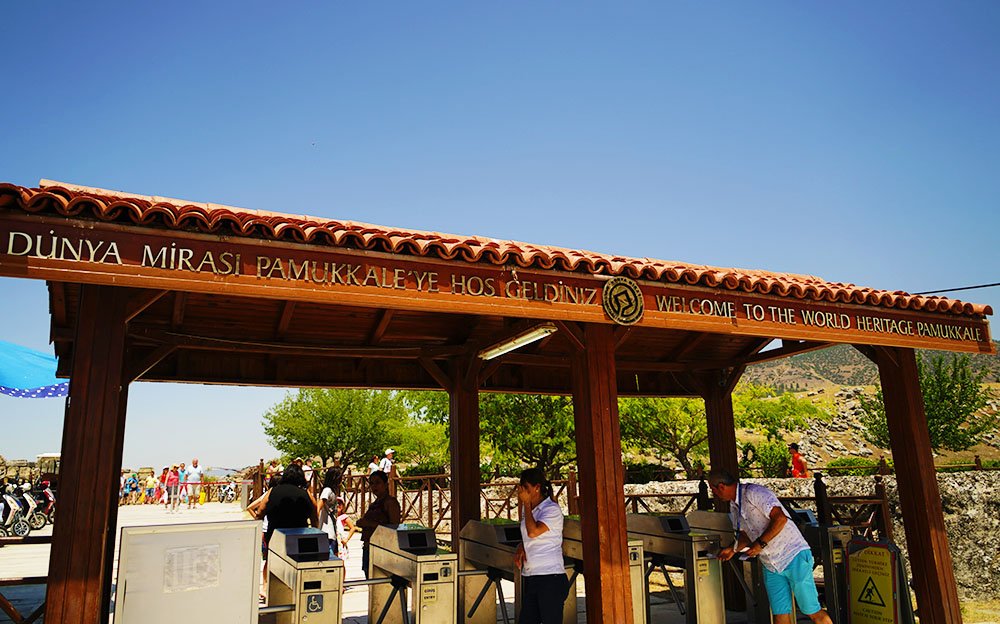
The whole area stretches for several kilometers from one end to the other. On foot, it can take many hours to cover this distance whilst appreciating the ruins and artefacts which are spread around over a very large area.
For people who wish to save some time, there are little electric bikes you can rent and drive around yourself.
I would definitely recommend this option especially in the summer where temperatures can soar into the high 30's and even 40's.
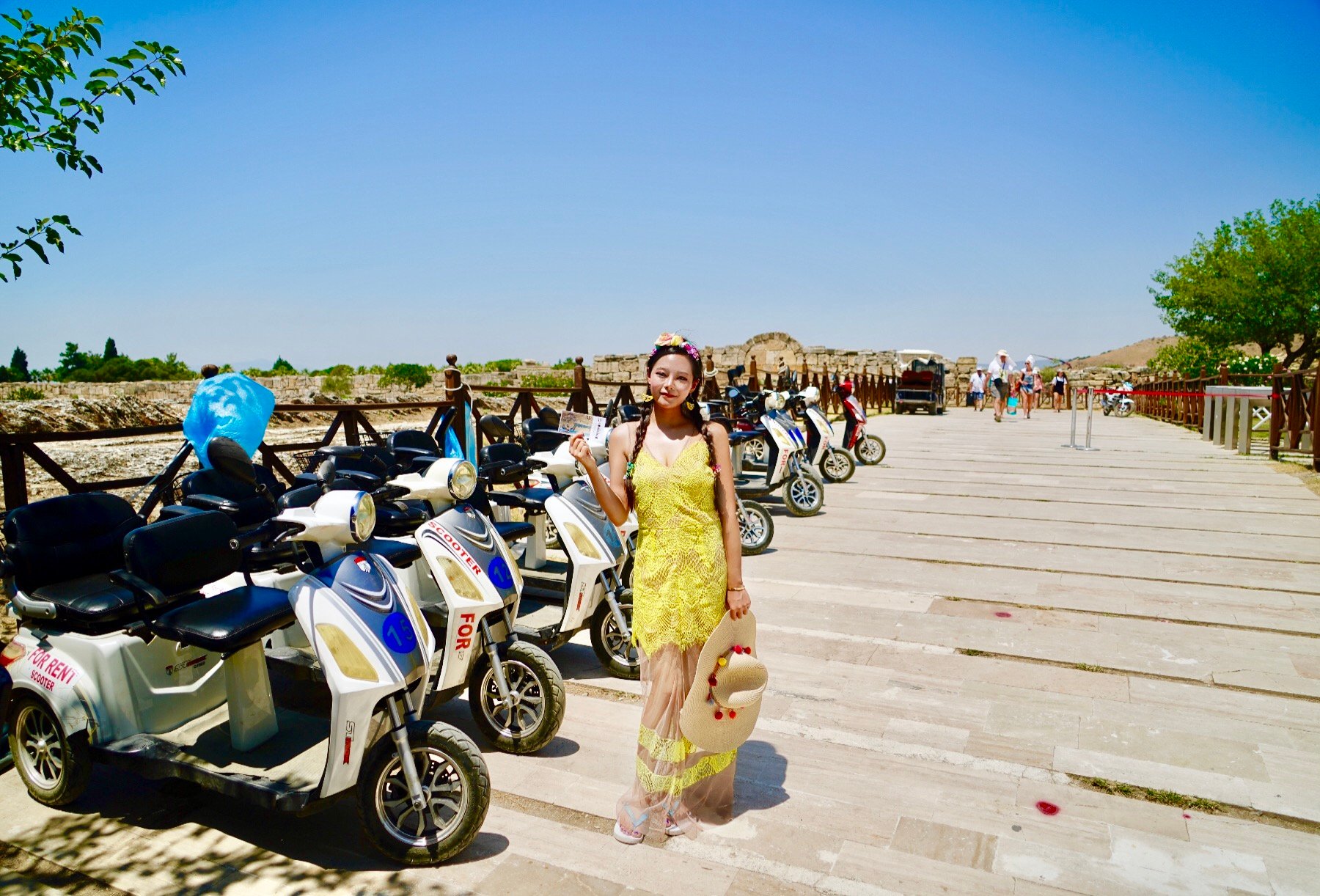
Despite the temperature being 43 degrees Celsius, there are still people gliding up above in the sky, and many heat resistant people walking from site to site.
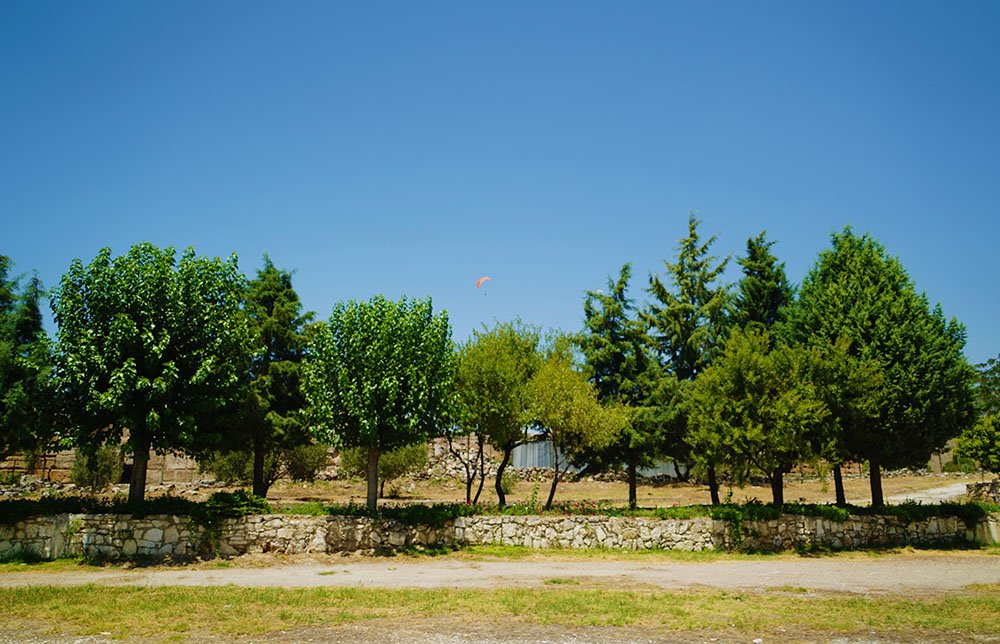
I decided to take a buggy with a roof and driver because the actual Hierapolis site starts at the Northern entrance which is the complete opposite side of the Southern Entrance where I came in. Even on the buggy, it takes around 10 minutes to drive there.

At the very end of the Northern entrance, we find the Necropolis which itself extends for nearly 2km.
This particular necropolis is one of the best preserved in all of Turkey and inside you will find the excavations of nearly 1200 tombs.

The most common type of tomb seen in the picture below are the sarcophagi. These date back to as early as the 1st century AD. Usually they are surrounded by walls or trees but each have their own inscriptions and design.
What's interesting is that much like the graves we find in the modern day, there are different kinds of graves for people with different socio-economic status.
The northern necropolis is where the tombs of the rich people are situated and usually feature meticulous craftsmanship as well as inscriptions of the names of the dead buried inside.
This particular sarcophagi stood out to me because it's elevated above a stone arch!
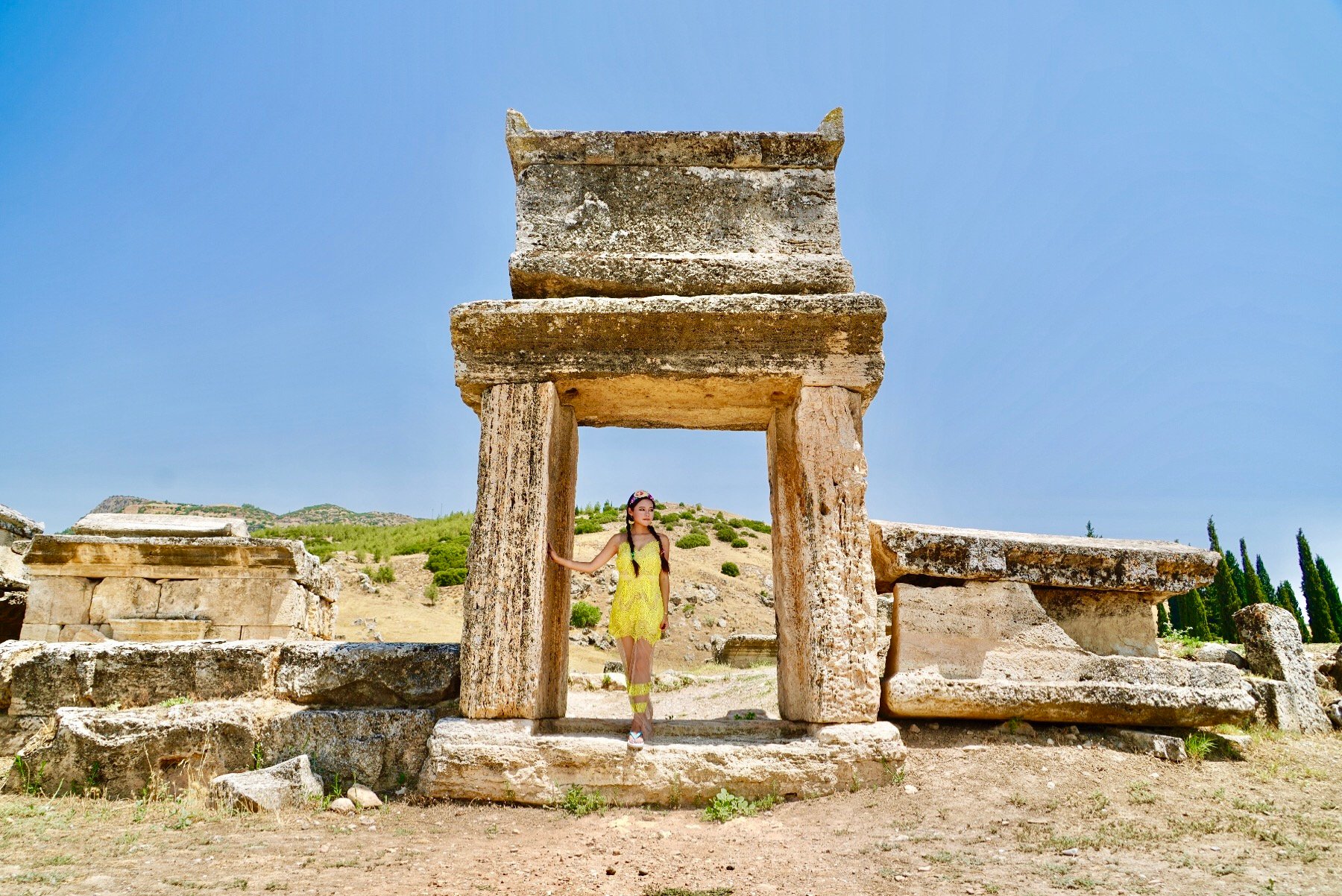
Usually, the larger the tomb, the more important the person buried inside was. As you can see, there are quite a number of large tombs which stick out amongst the smaller ones surrounding them.
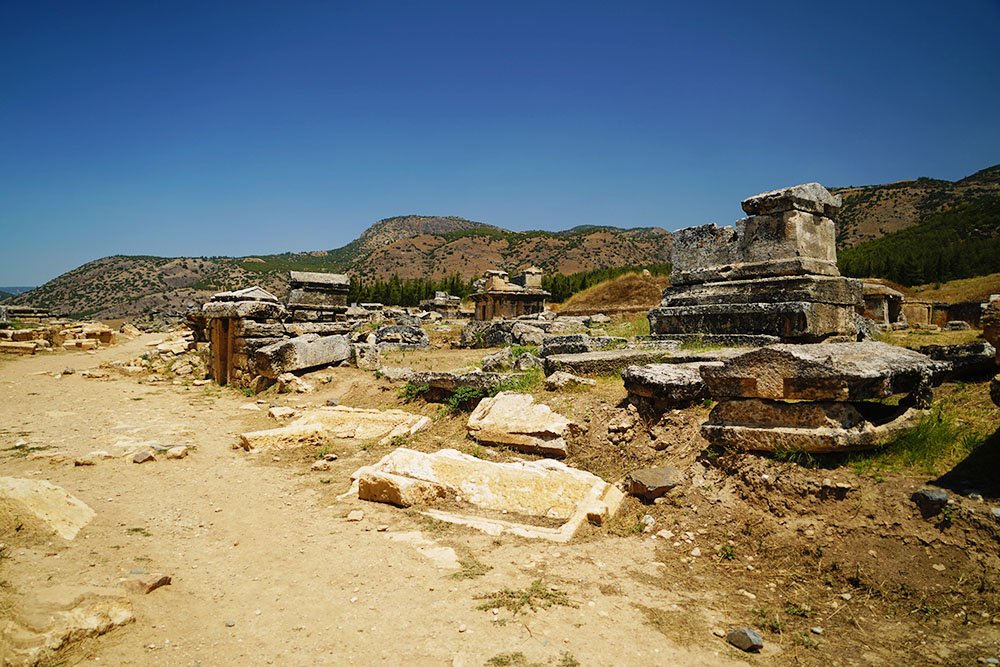
Even though most of the tombs have now been excavated, most if not all have been vandalised over time.
In the past, words of warning were inscribed on the tombs themselves which would curse anyone who would try to vandalise them. There were even fines that were levied on people who were caught trying to do so.
Check out some more pictures of the Necropolis below!
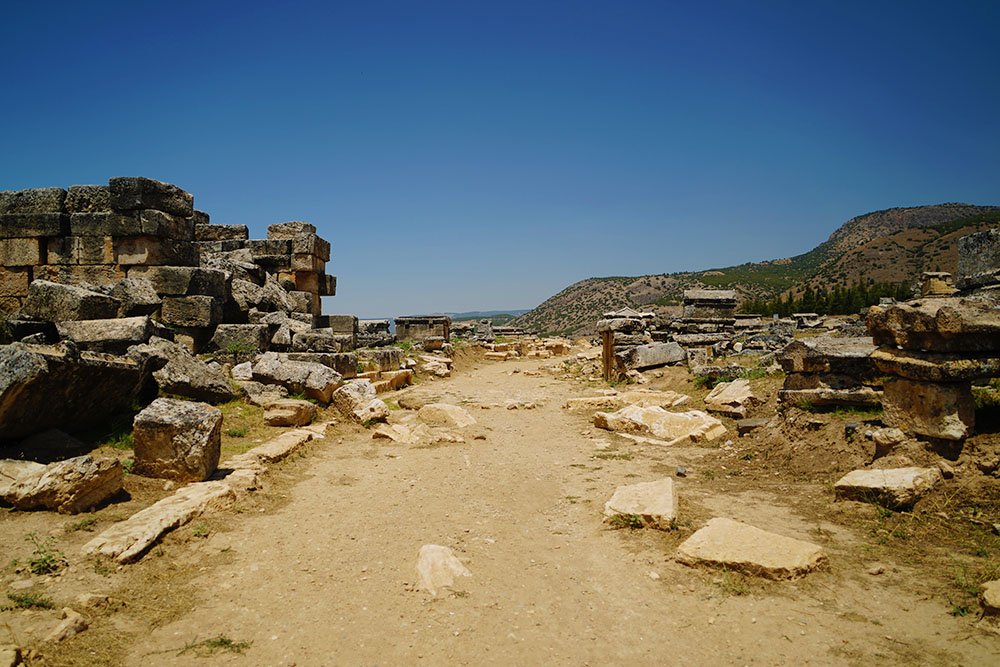
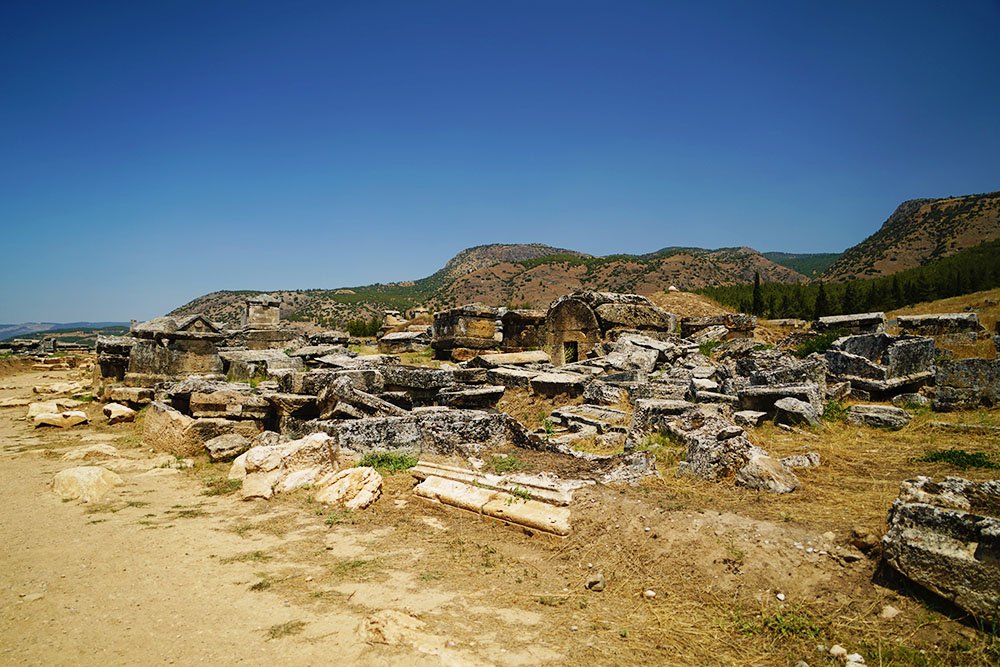
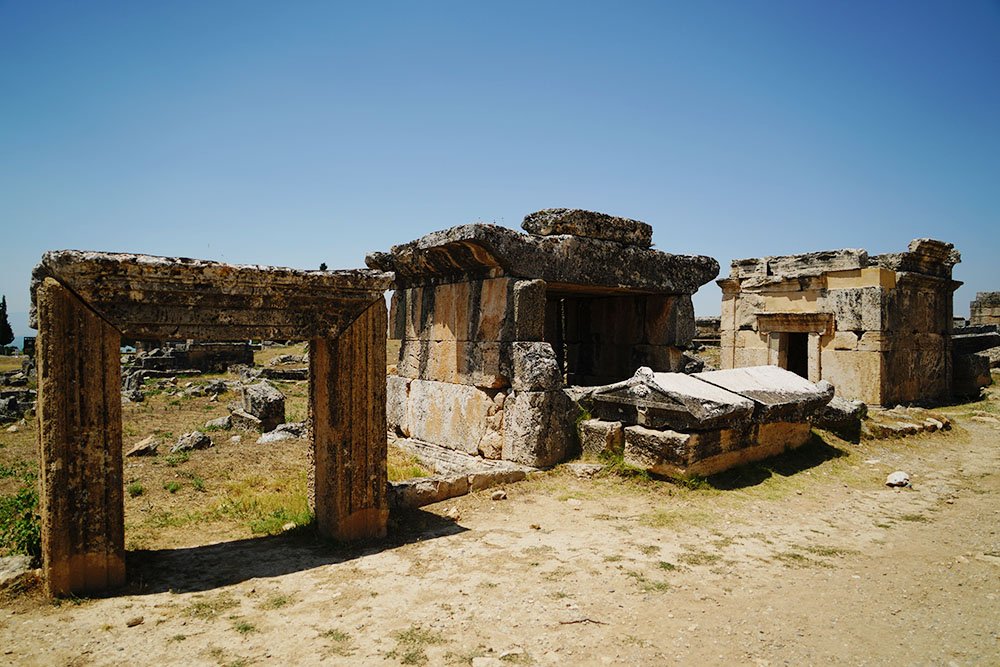

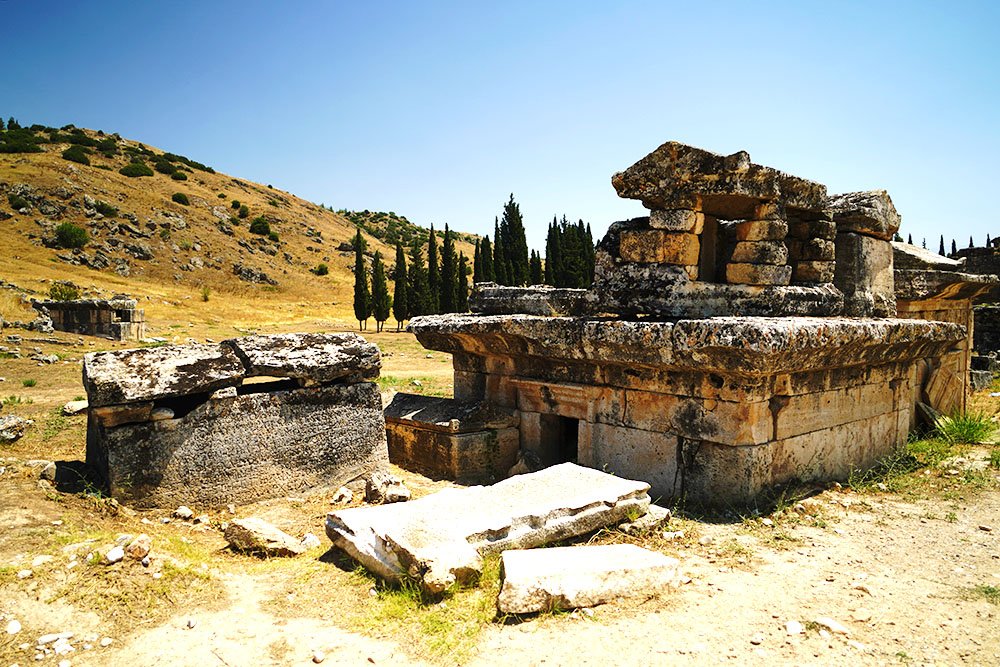
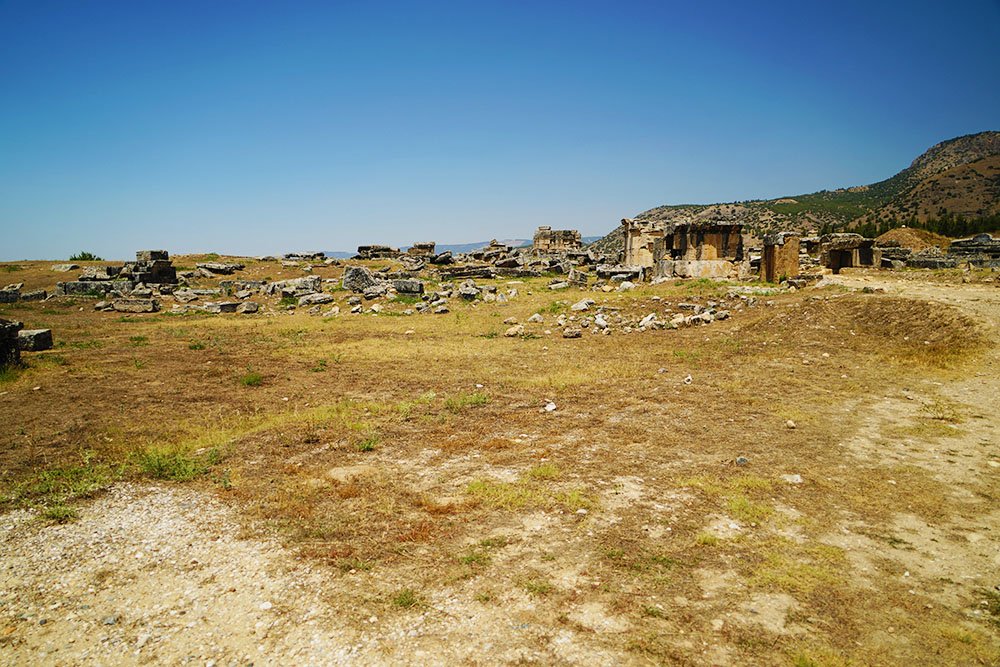
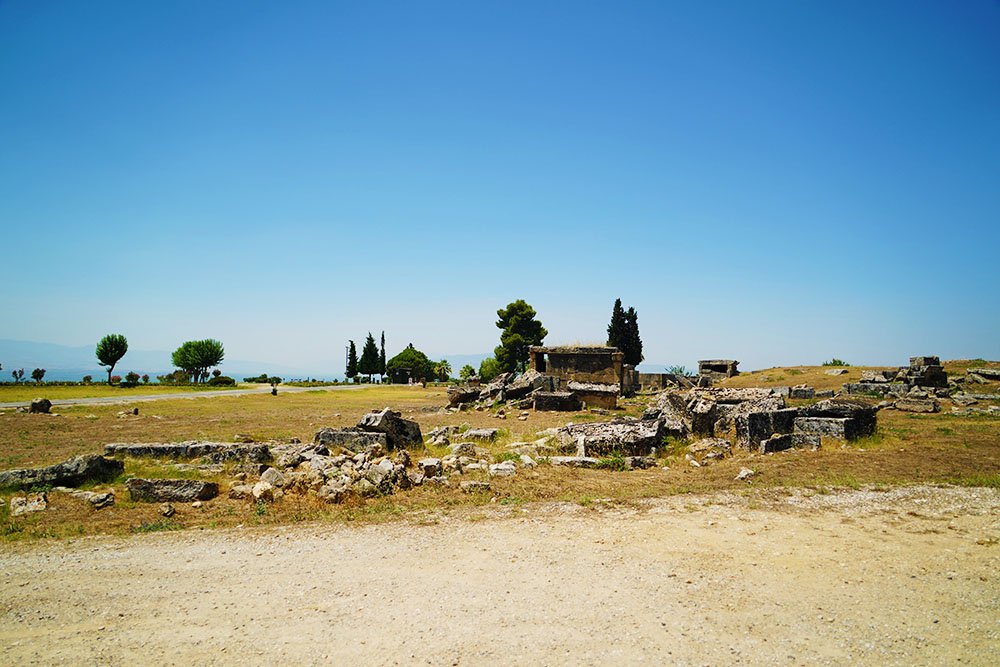
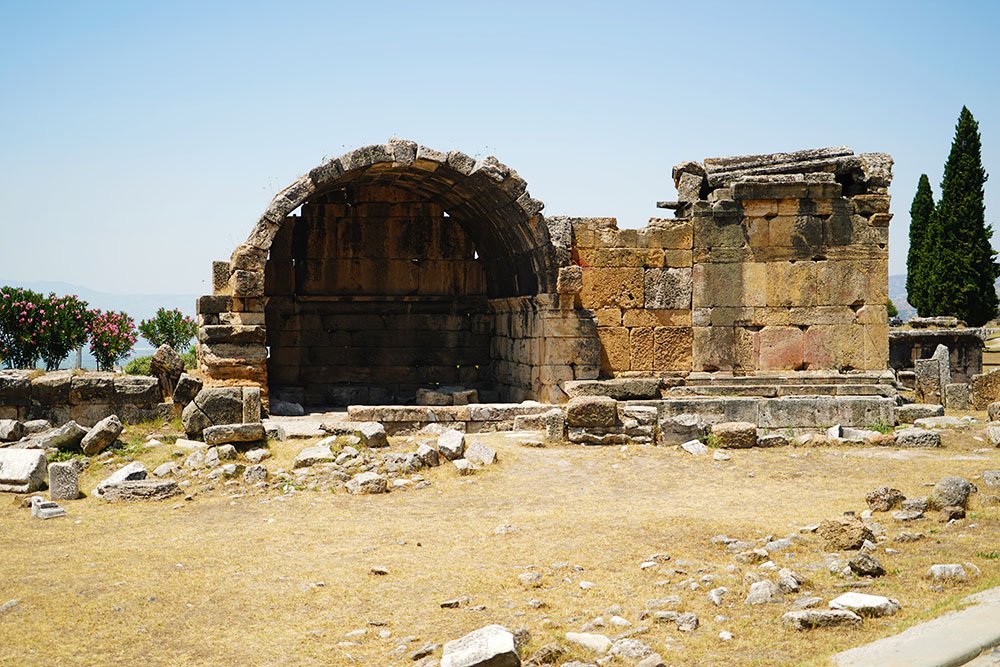
The Basilica Baths
Coming back from the Northern Necropolis, we can see these two marvellous arches which have been really well preserved. These are in fact travertine rectangular blocks erected as part of the Basilica Baths. Originally used as a place to bathe, the structure was later transformed into a church during the first half of the 6th Century.
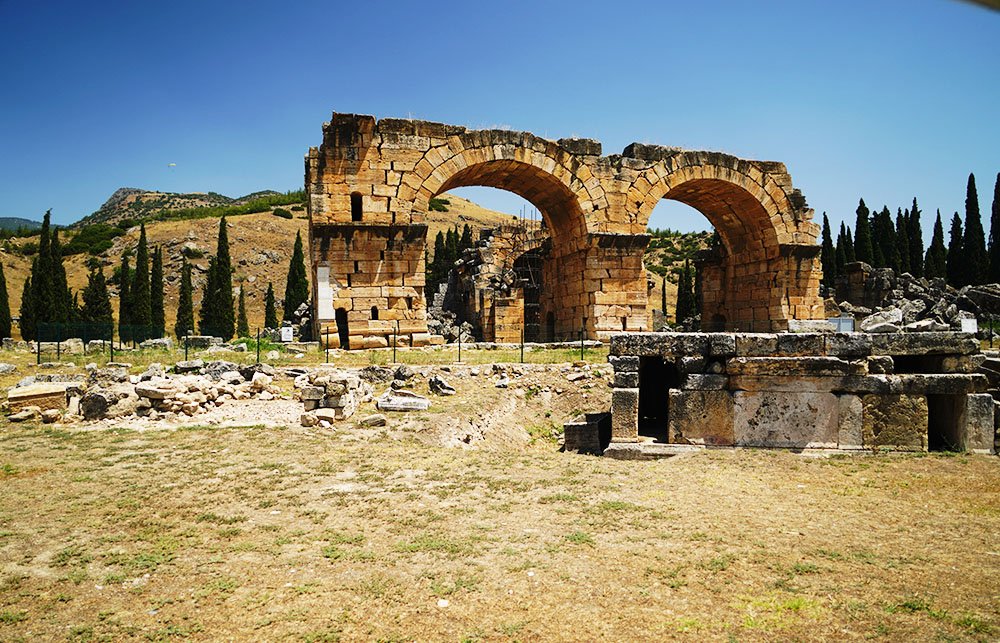
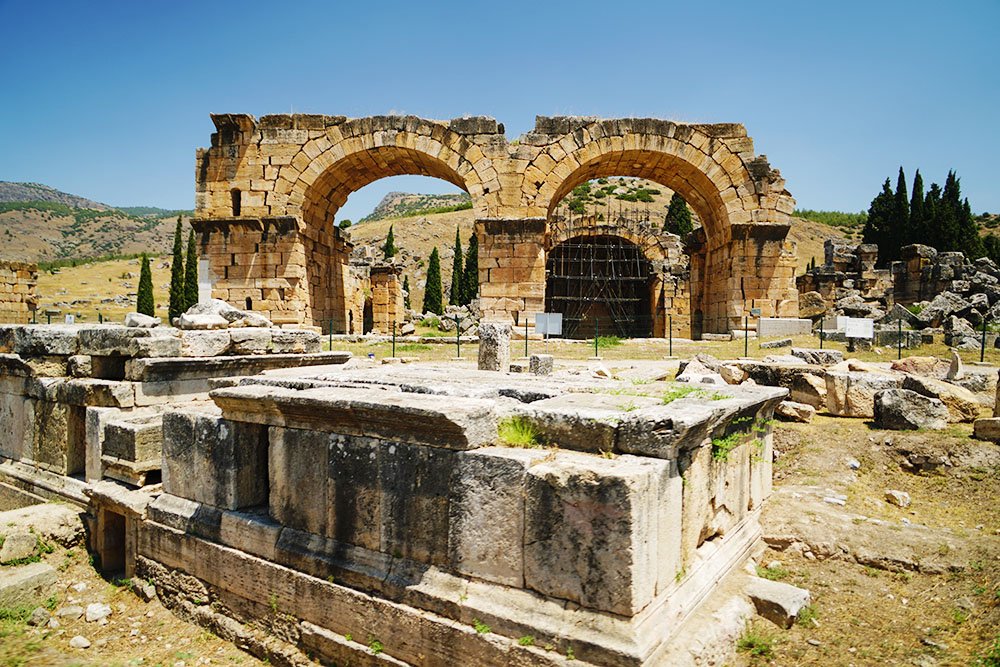
The Frontinus Gate
Serving as the entrance to the Frontinus Avenue, The Frontinus Gate was built by Julius Frontinus - the Proconsul of Asia Minor to the Emperor Domitian. It is therefore sometimes referred to as the Domitian gate.
I was really surprised to find the gate mostly intact with three distinctive arches which would have been embellished with columns and decorated with simple corniche. Either side of the gate are the cylindrical towers from the Hellenistic era.
The Frontinus Avenue behind me stretches for roughly 1 km and is about 14m wide. Originally it was referred to as Plateia Avenue.
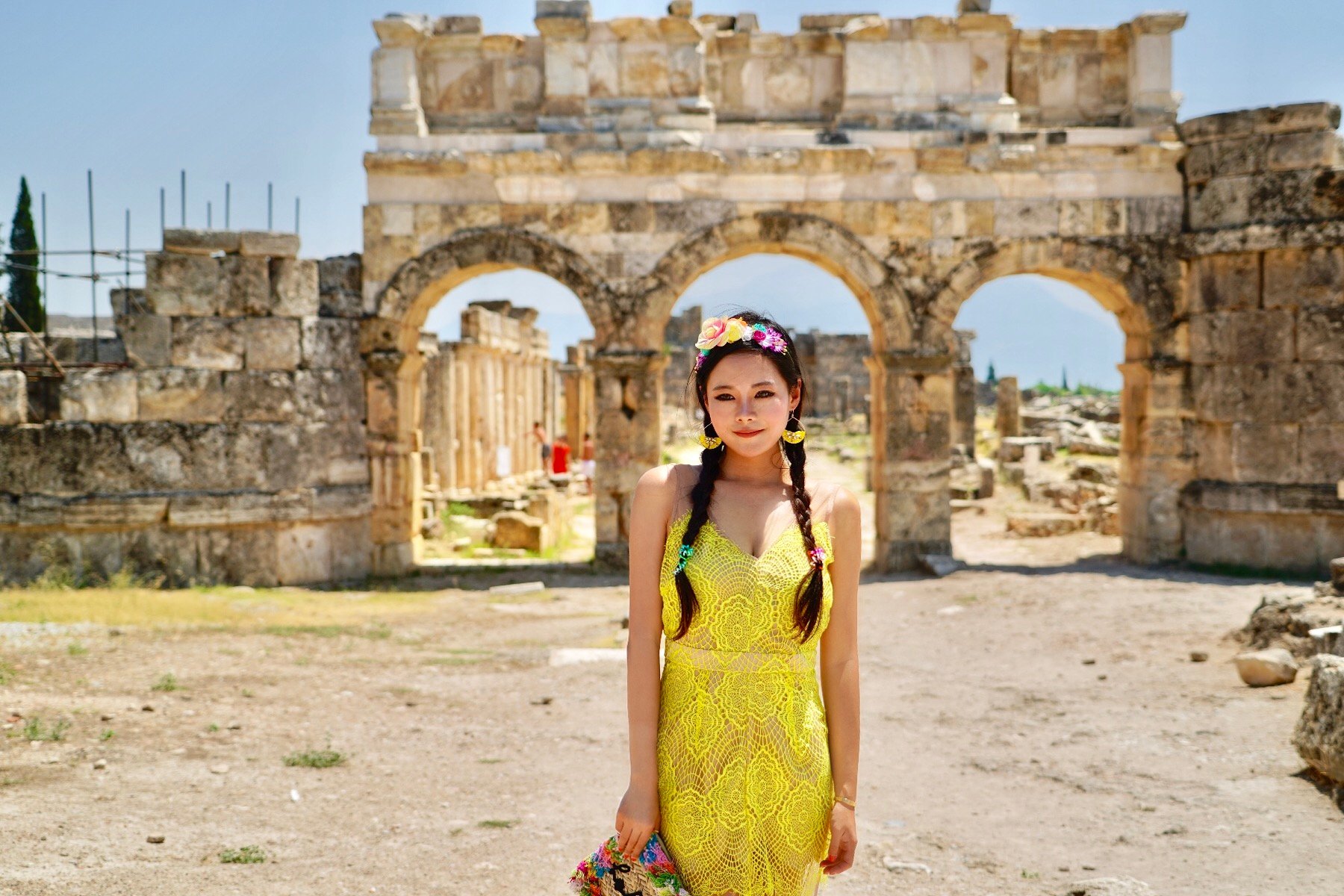
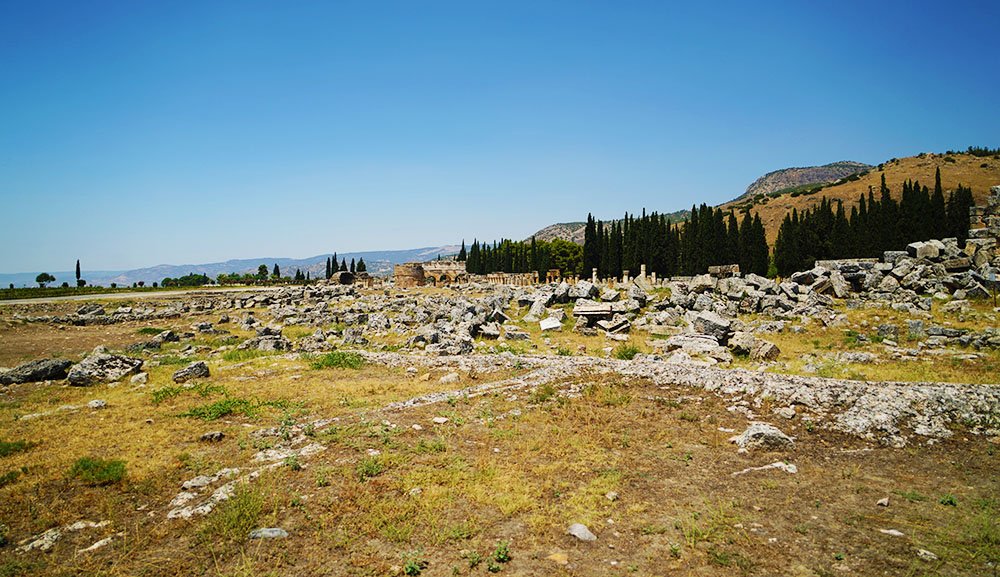
This is The Latrine, otherwise known as the town's public toilet. Situated just after the Byzantine churches, it was constructed in the 1st century AD but then later collapsed due to the semi-frequent earthquakes which would occur in the area.
Surprisingly, most of the pieces which fell were very well preserved and post excavation were renovated and then resurrected to their original standing position.
It seems like in those days there was less modesty required in public toilets as there are no modesty dividers evident anywhere.
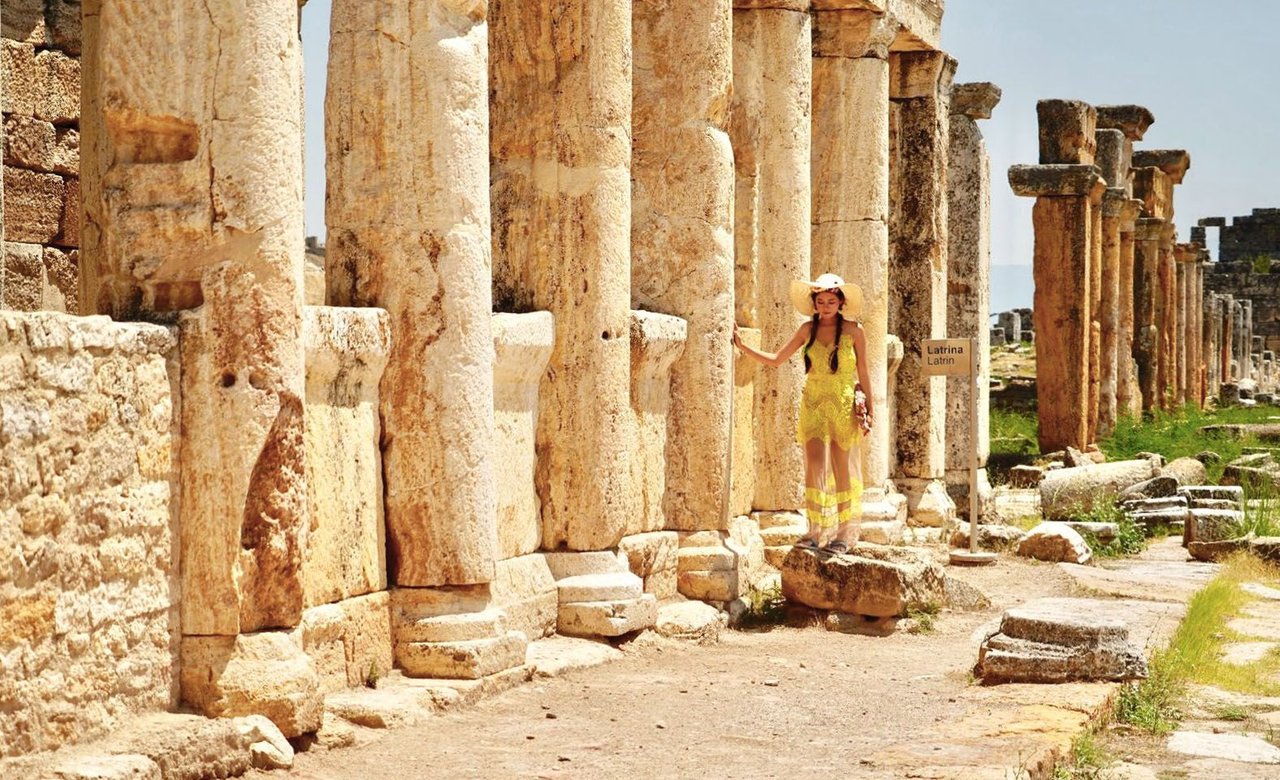
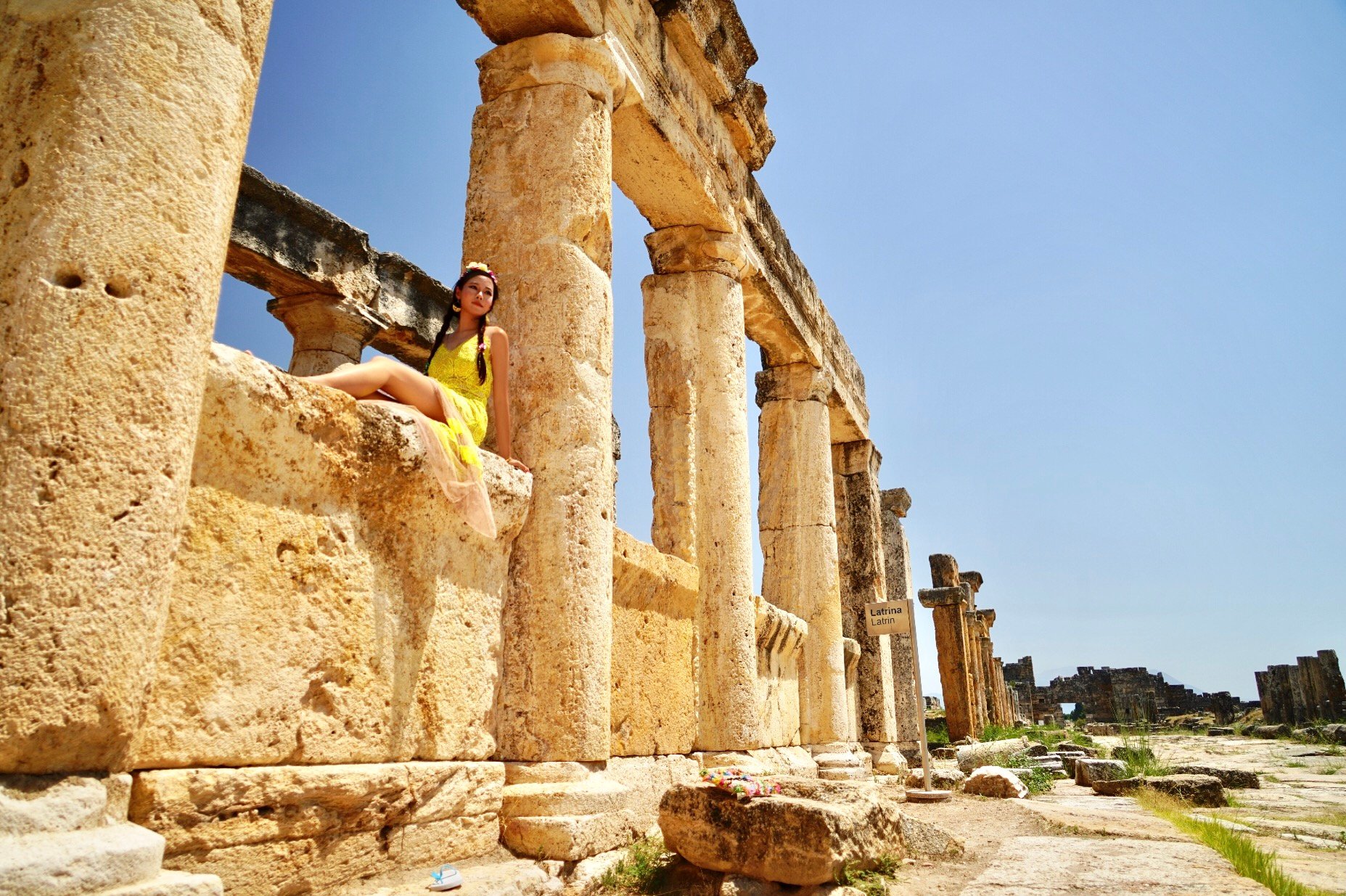
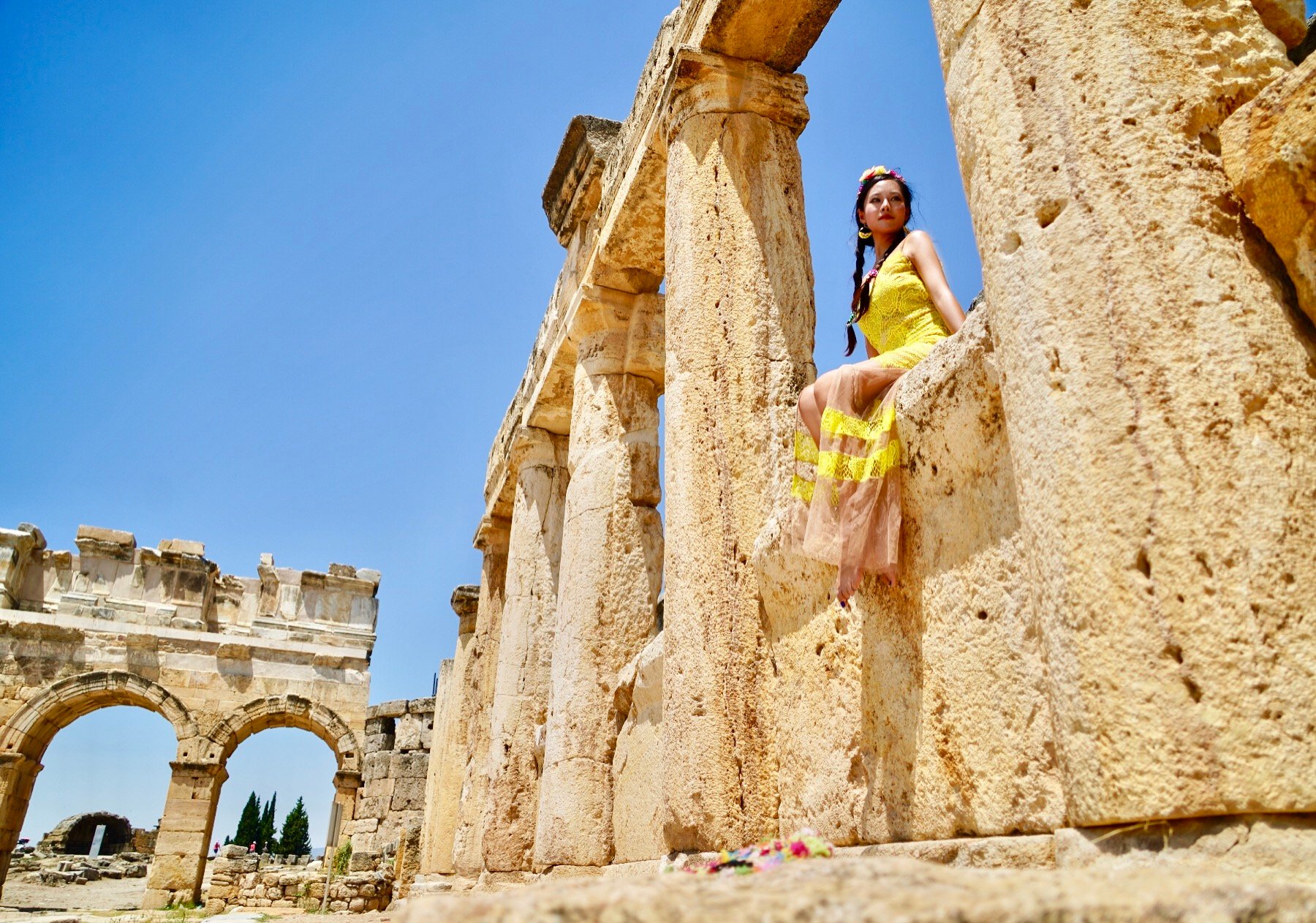
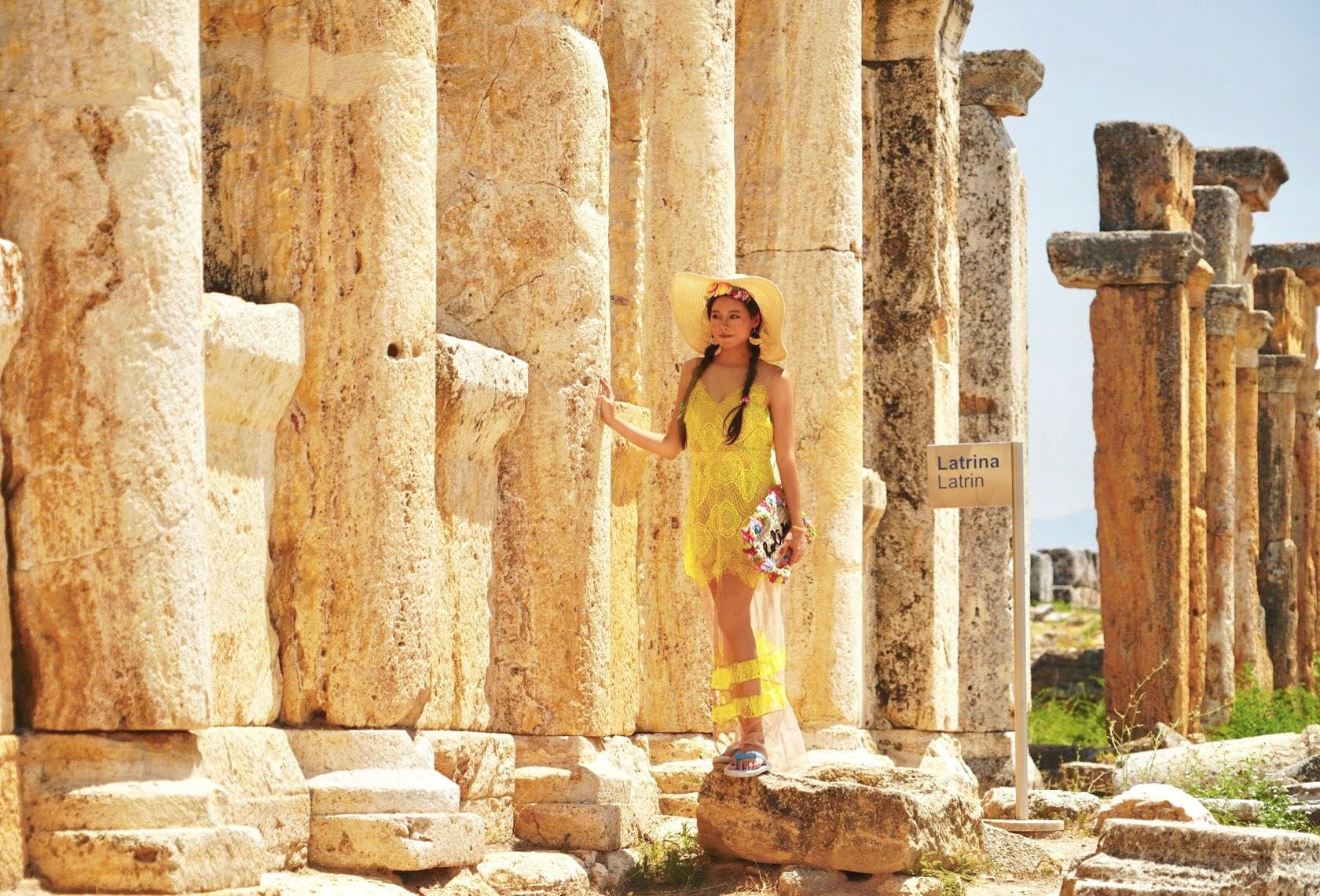
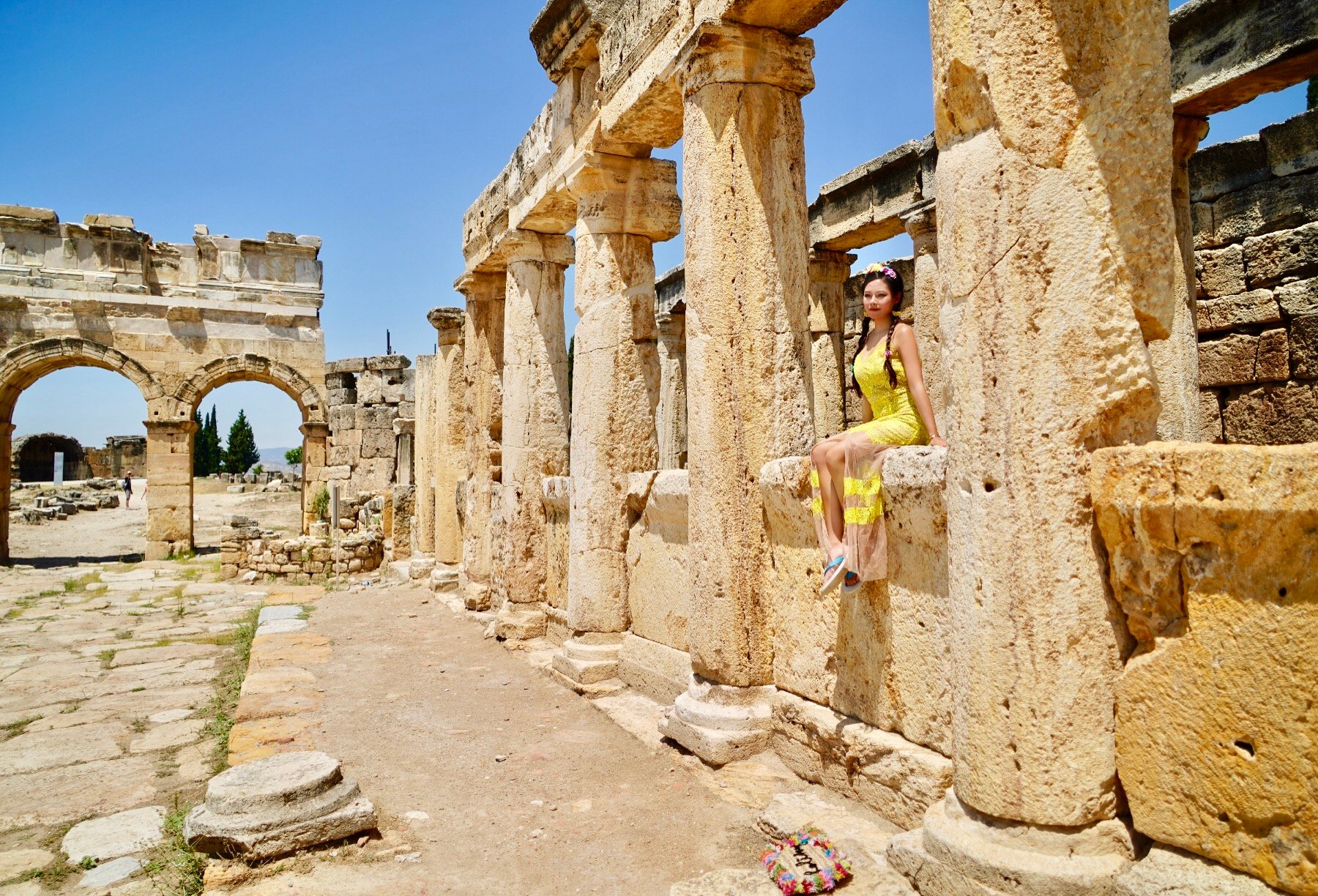
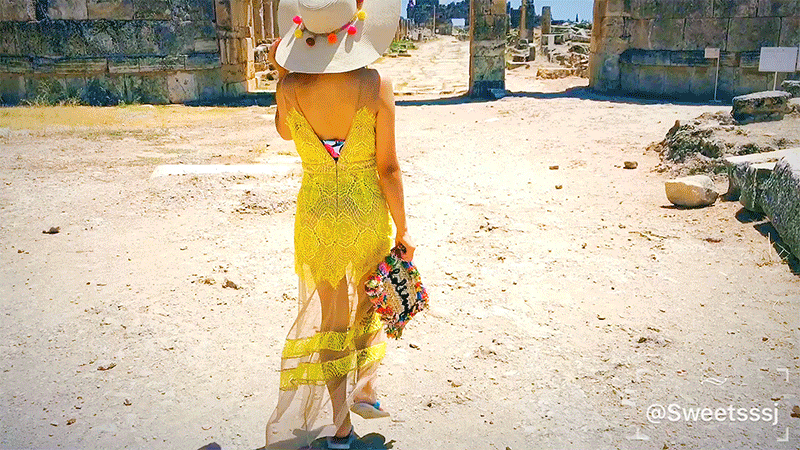
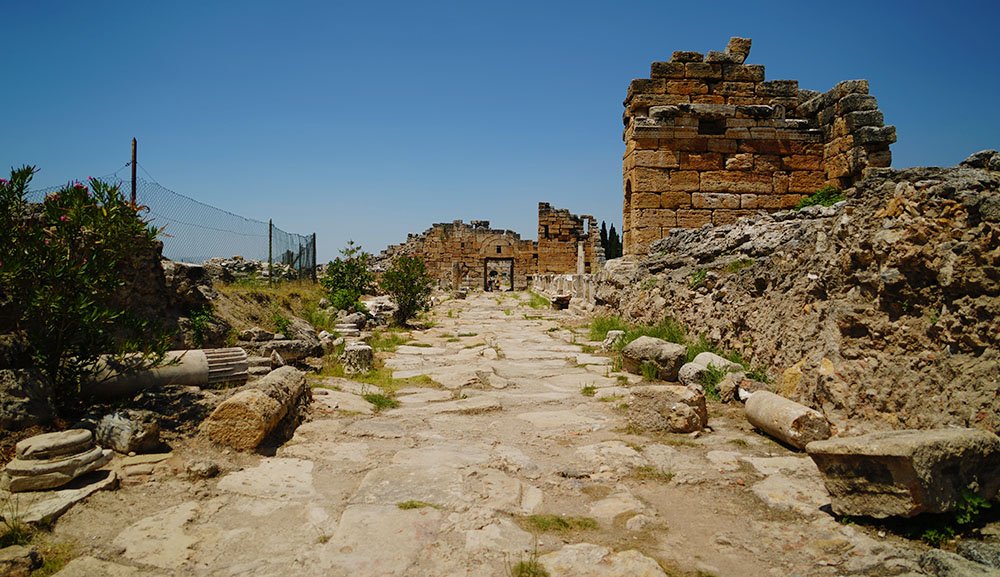

This is the inside of the Latrine. The structure was originally split into two columns and in the middle, there was a duct used as a sewage channel. On the other side of the columns, there was a terrace for people to sit on whilst using the toilet!
I honestly didn't even know I was walking through the sewage area of a public toilet when I had this picture taken. It's good to know though!
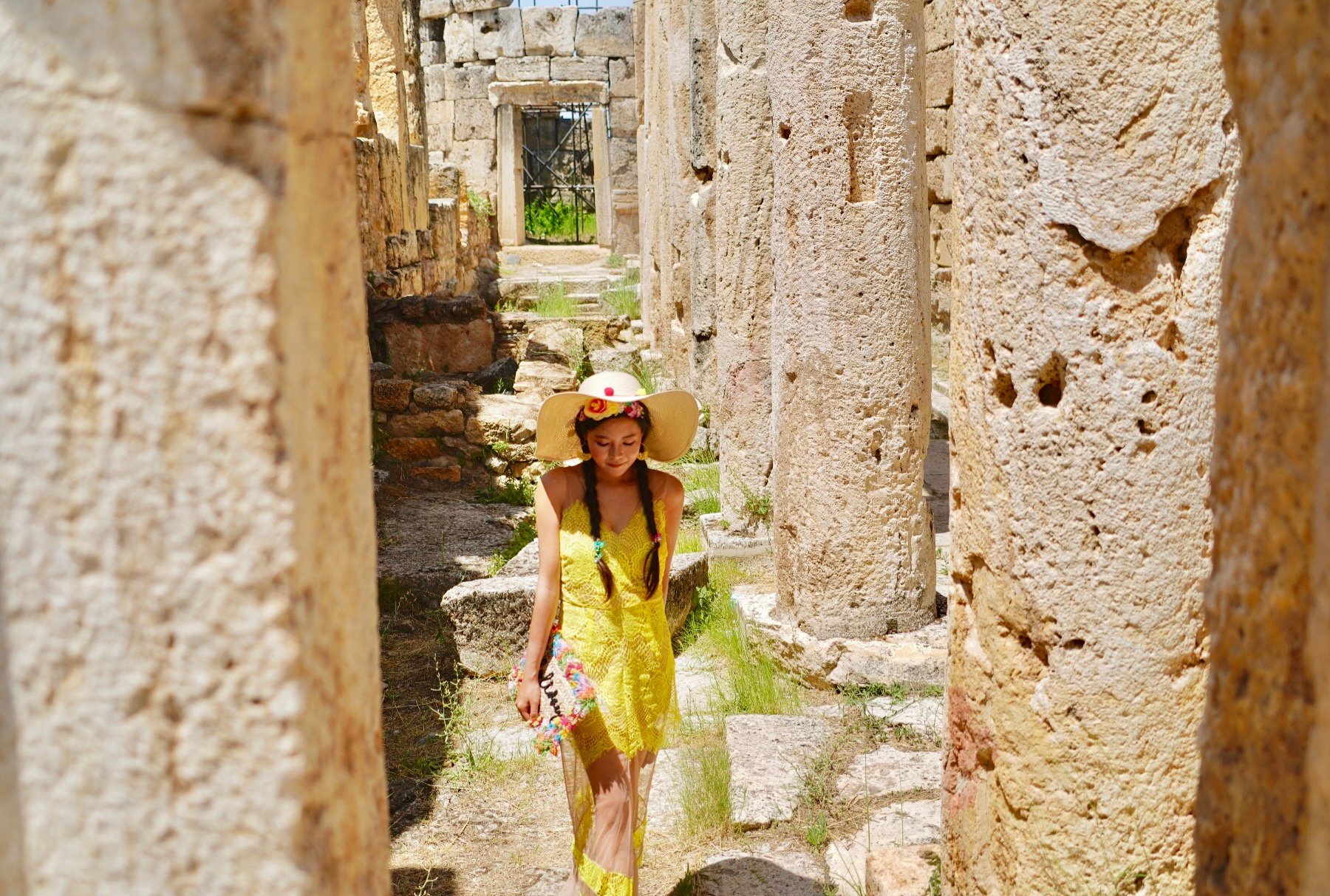
These are some of the ruins of the houses that were build around the Frontinus Avenue.
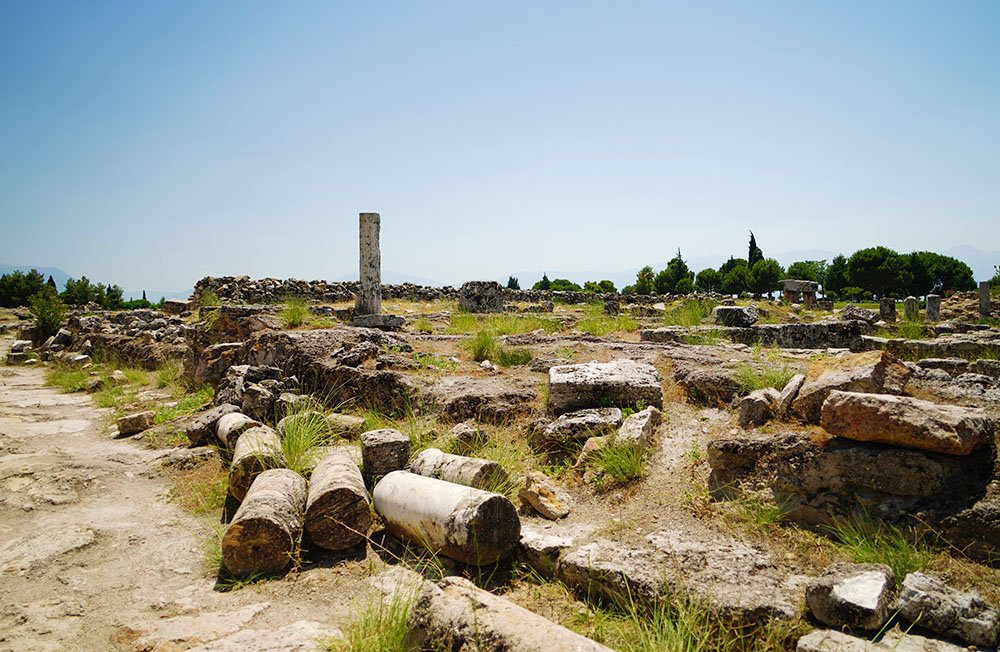
Hierapolis was surrounded by protective walls. This fine example is the North Byzantine Gate.
It was really huge, and really impressive considering it was erected in the late 4th century!
Just look at how small I am in the picture!
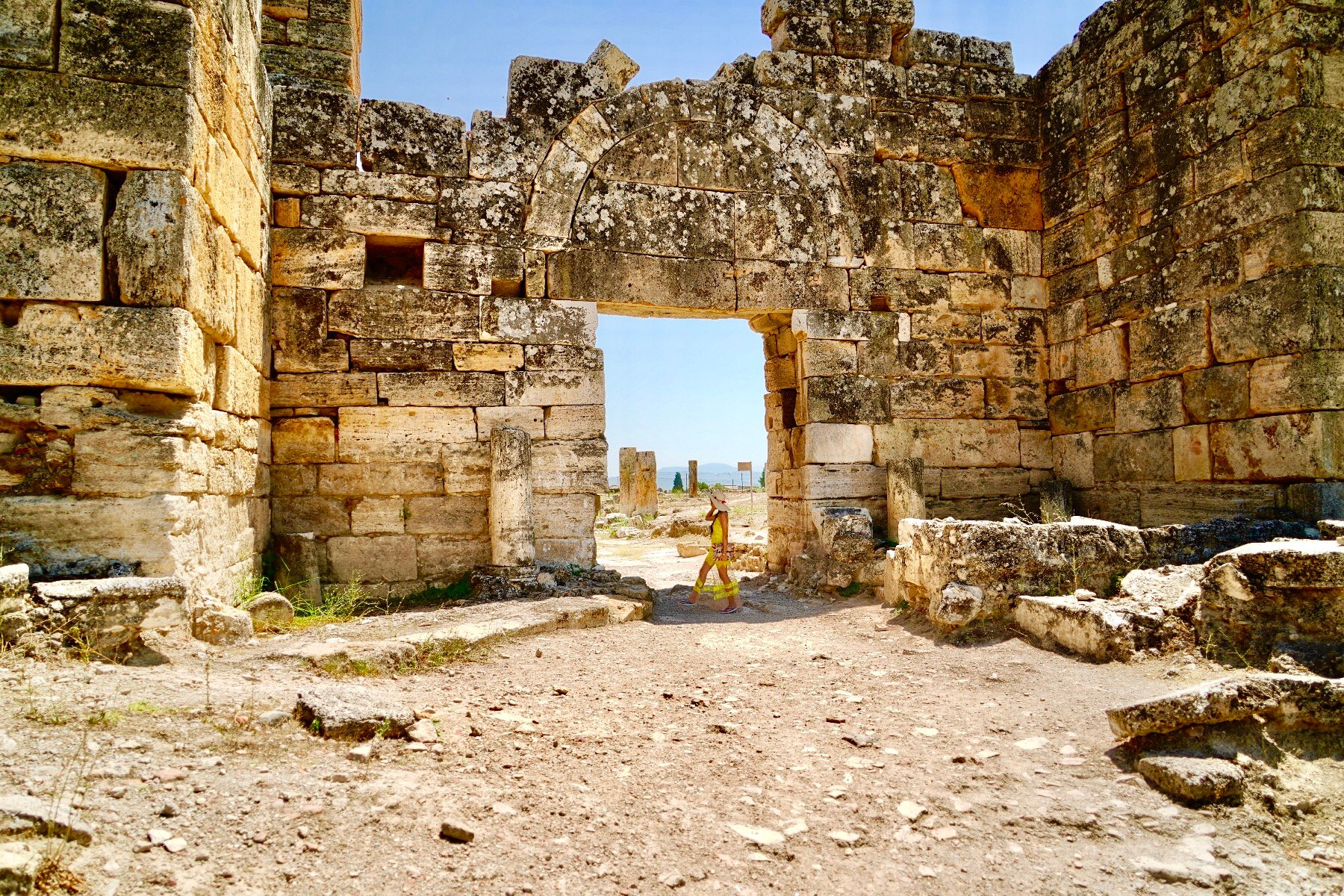

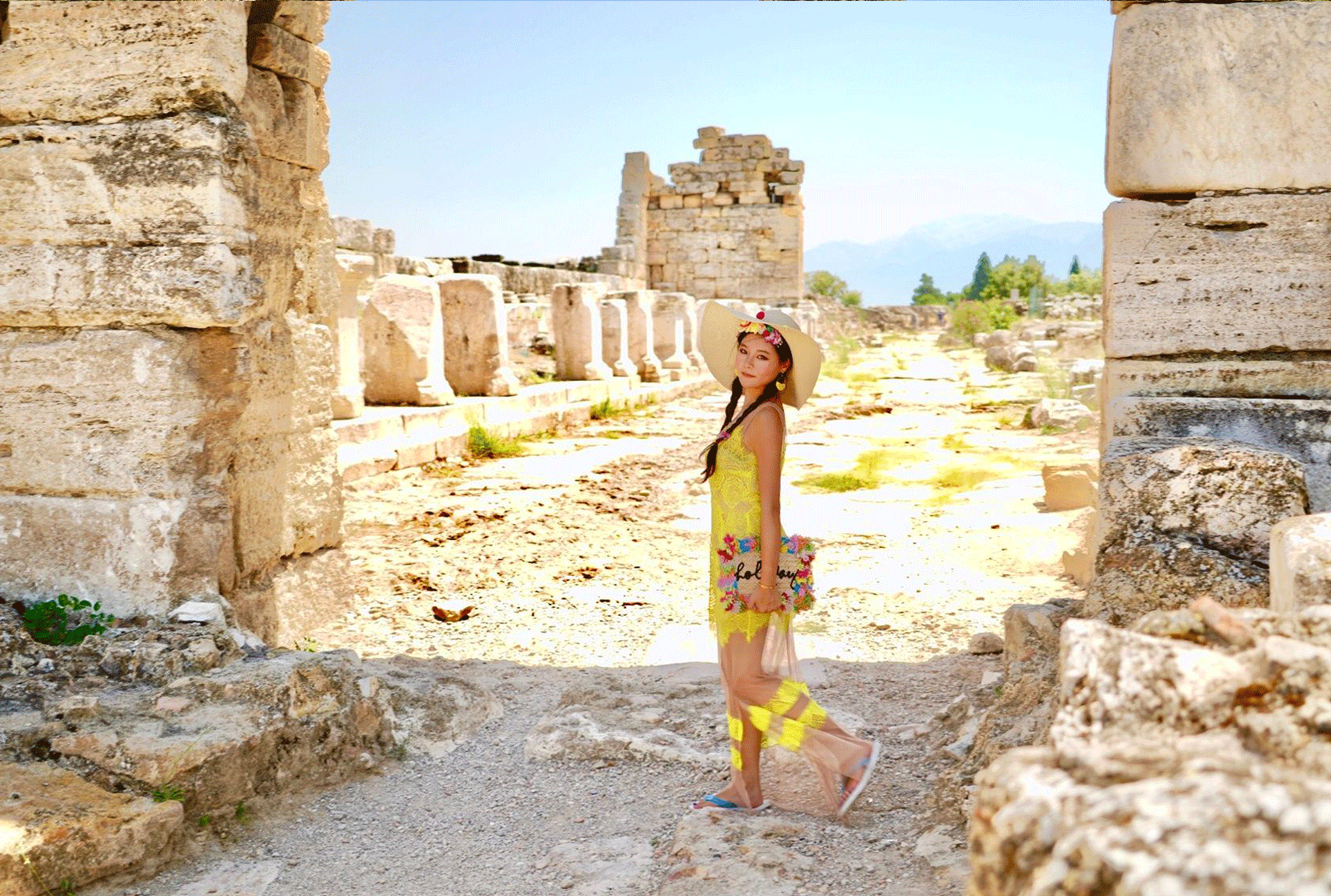
As you pass through the Byzantine Gate, we reach The Triton Nymphaeum.
This used to be a fountain which followed along the entire street. It's called the Triton Nymphaeum because it used to feature figures playing sea trumpets and other musical instruments.
The niches that you see here were made for placement of statues.
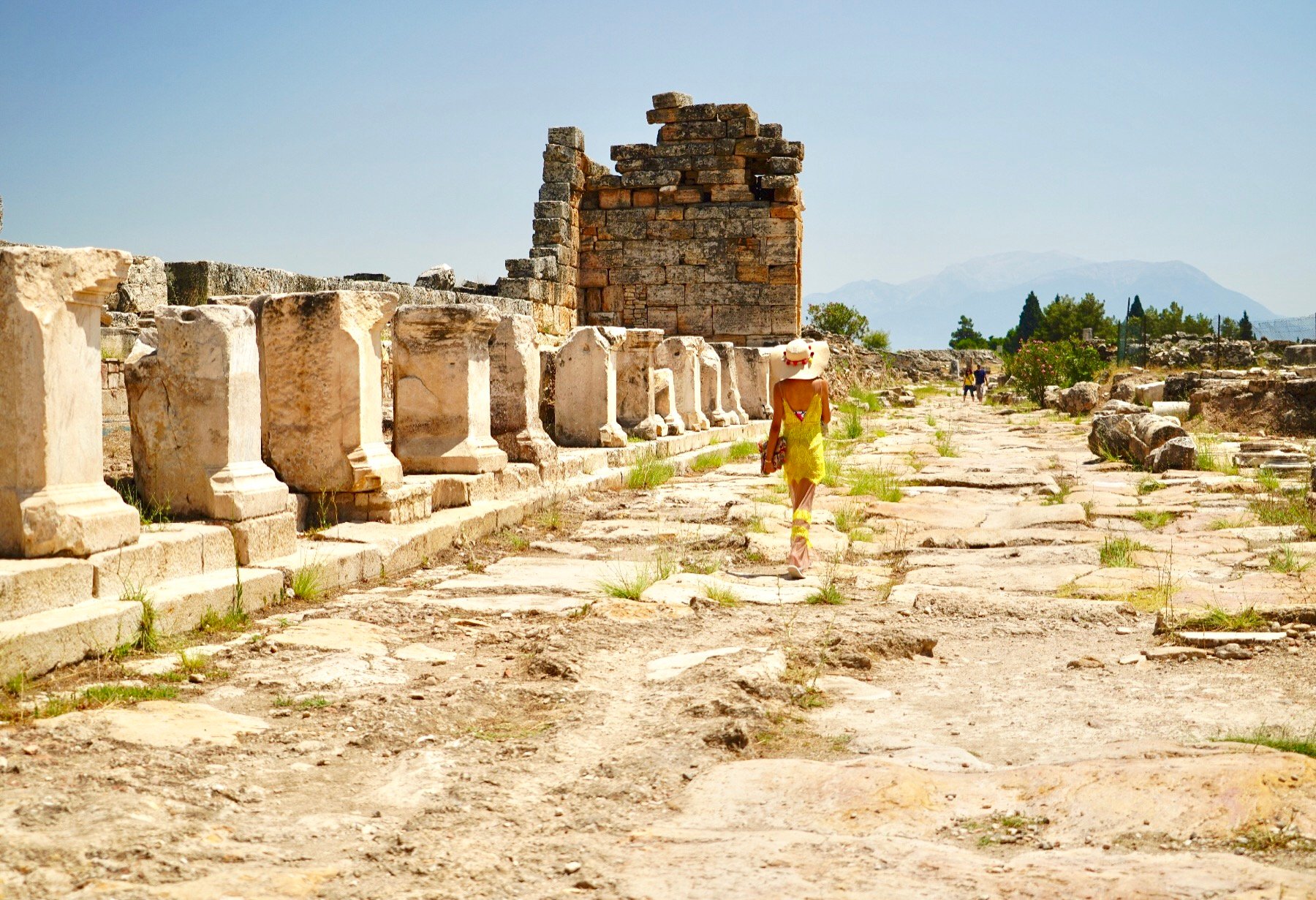
Check out a mini video of my visit!
And that wraps up my quick tour of the ancient city of Hierapolis and the very large Necropolis to the North.
I hope that you enjoyed the pictures of the ancient ruins of this great city. It's one thing to see them in pictures, but another to actually visit and walk inside. I sincerely hope that if you have the opportunity to visit Pamukkale that you spend ample time exploring this ancient city and hopefully uncovering even more history than I have covered here!
As always, I appreciate your upvote if you liked the post, a follow if you want to keep up to date with my activities, and please do leave a comment to let me know what you think!
今天我想带大家继续探索美丽的棉花堡,再高的温度也无法融解我对古城古迹文化的热情。如果说棉花堡是人间仙境般的天然美,那么地处棉花堡山顶的希拉波利斯古城就是震撼人心的历史美。头顶着43度高温,我往身上涂了些防晒霜,为了与列入世界遗产名录的希拉波利斯古城来个亲密接触,我勇敢的走进了烈日下。不知从何时起,只要是要去看历史古代遗迹,我就异常兴奋和激动。
希拉波利斯位于棉花堡之上,古城建于公元前190年,在被罗马帝国控制的时候,曾居住着10万人口。那时候是依靠当地丰富的温泉资源,使得古代罗马、希腊的贵族把这里当做疗养胜地,当然也不乏犹太人、异教徒、基督教徒从四面八方而来泡温泉,因此希拉波利斯古城逐渐转化为繁荣的城市。这么看起来,土耳其自古以来还真是一个包容的国家,大方的接受不同教派,尊重不同信仰,从而出现了各民族国家人民同享受温泉的场景。直到突厥人的入侵和地震的双重伤害,让曾经辉煌的城市化为废墟。为了更快的到达古城脚下,我在门口租了个小电动车,小车子自由的驰骋在古迹当中,恍惚之间感觉自己穿越回了古代。身边的景色一直变换,一会是山上光秃秃又奇形怪状的岩石,乱石和野草重生,在太阳照射下发着光,一会是地上长出了一片茂密的树林,天上还有自由自在享受滑翔伞的勇者们。我静静的欣赏周围的风景,从荒芜的土地来到了一片石头聚集的一大片古代墓地,这里有超过了1000座坟墓。听说在这延伸了好几公里的公墓里,也埋葬着那些希耶拉波利斯医生没有治愈好的温泉疗养病人。除了墓地,还能从残留的废墟,拼凑着看到古代集市,神庙遗址的影子,以及古希腊,古罗马的雕塑。这里和以弗所古城略有不同的是,随处可见修剪整齐的花草艺术和休息用的石椅。
眼前这个浴室,是由石头砌成的几座相连巨型拱门,这也是典型的罗马建筑。浴室边上这三座连续的拱门特别气派,从这开始向南就是一直通向北边的南北大道。我顶着烈日,走在古老的遗迹里,似乎感觉的到地老天荒。伸手抚摸一下古老石块的气息,沧桑之美令人难忘。走进拱门的右侧,是古代的公厕,但是我还是难以拒绝这样美丽的建筑,坐上去合影了。在公厕的后方,是古代的运动场,可惜现在已经看不太到运动场的痕迹了。但是罗马建筑艺术的神韵在这座古城里却依稀可见,如今这条大道上大多是断壁残垣散落在地,不少建筑已经被栏杆围起。希望大家喜欢今天我们探索的历史遗迹,之后还有更多有趣而难忘的故事要分享给大家。

